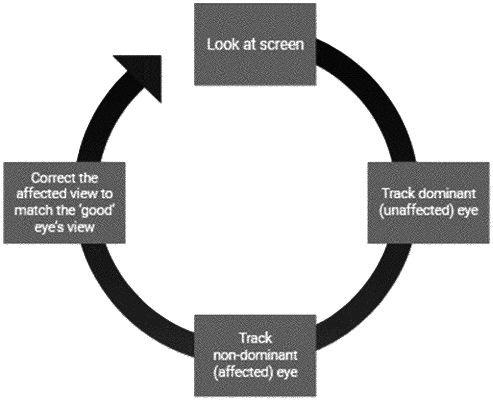| CPC G06T 3/18 (2024.01) [A61H 5/005 (2013.01); G06T 7/00 (2013.01); A61H 2201/5007 (2013.01); A61H 2201/5092 (2013.01); G06T 2207/30041 (2013.01)] | 4 Claims |

|
1. A computer-implemented method for treating and correcting strabismus in an afflicted individual's eye, the method comprising:
obtaining at least one image on each of the eyes of an individual using a VR headset, wherein one eye is dominant and one eye is non-dominant;
electronically storing data from the two images on the dominant eye and on the non-dominant eye;
highlighting the focal point of the dominant eye's image;
using a homography matrix that maps points between the two images;
establishing where the focal point of the dominant eye's image lies in the non-dominant eye's image using the homography matrix to evaluate a desired gaze point; and
warping the image of the eye affected with strabismus to create a correction image so that the gaze point of the affected eye lines up with the desired gaze point, thereby controlling the image seen by the affected eye.
|